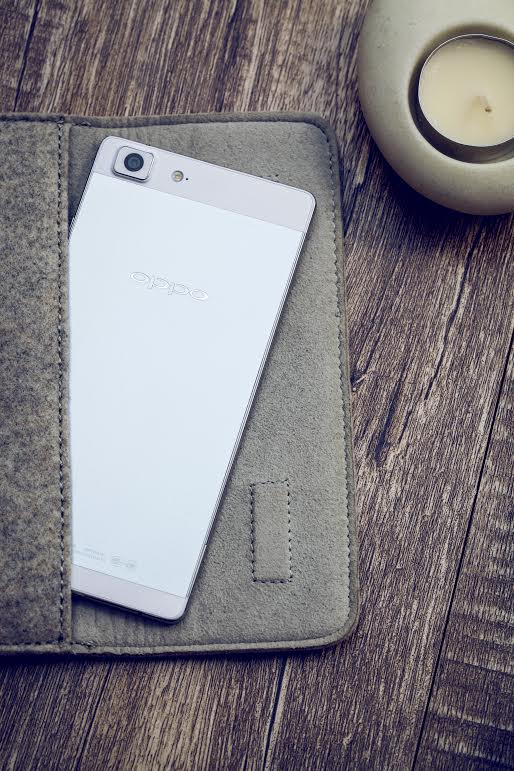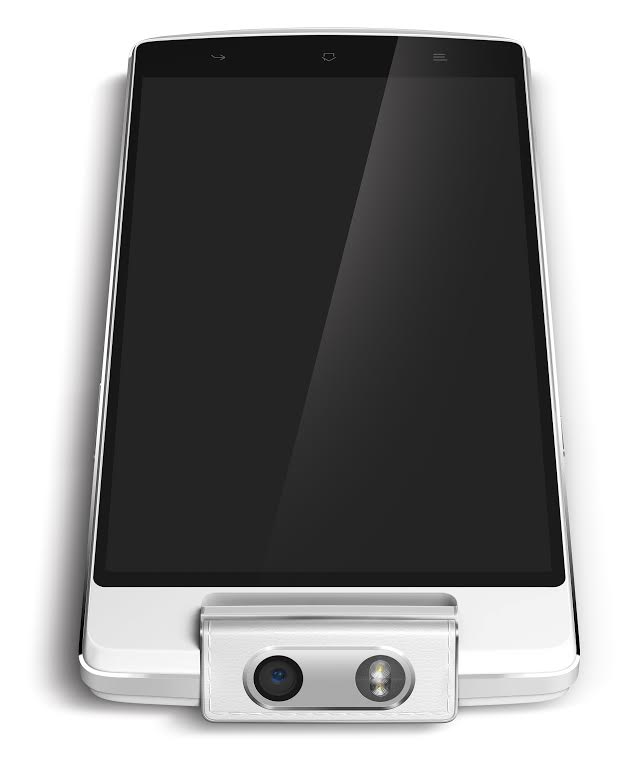Chinese brand targets the titans with high-quality device at cutthroat prices

Oppo's annual marketing budget for India alone is more than Dh90 million (Rs150 crore)
Chinese smartphones manufacturers are getting hotter by the day. And by hotter we mean more ambitious.
Xiaomi, for instance, may not be a household name (yet), but the Chinese brand is already the world’s third largest smartphones maker, racing past the likes of LG and Lenovo (tied at No 4) and right behind leaders Samsung and Apple (in that order).
Then then there’s Oppo, a relatively new entrant, but with huge ambitions. While its better placed compatriot Xiaomi has managed to break into IDC’s Top 5 with its focus on China and adjacent markets like Southeast Asia, Oppo wants to take on the titans in its own home ground and everywhere else.
“We will prevail in the global smartphones market,” Henry Tang, regional sales manager at Oppo, tells Emirates 24|7. The company recently launched its flagship models N3 and R5 in Singapore, flying in partners, distributors and media from around the world in an apparent splash-the-cash strategy.
Xiaomi, for instance, may not be a household name (yet), but the Chinese brand is already the world’s third largest smartphones maker, racing past the likes of LG and Lenovo (tied at No 4) and right behind leaders Samsung and Apple (in that order).
Then then there’s Oppo, a relatively new entrant, but with huge ambitions. While its better placed compatriot Xiaomi has managed to break into IDC’s Top 5 with its focus on China and adjacent markets like Southeast Asia, Oppo wants to take on the titans in its own home ground and everywhere else.
“We will prevail in the global smartphones market,” Henry Tang, regional sales manager at Oppo, tells Emirates 24|7. The company recently launched its flagship models N3 and R5 in Singapore, flying in partners, distributors and media from around the world in an apparent splash-the-cash strategy.

It will be hoping that the money it spent in doing so is worth the hype – after all, the hyped-up Beijing launch of Xiaomi’s flagship phone MI4 earlier in July this year proved key to its success against the likes of HTC and Sony Mobile, whose lunch it may have stolen in busting through the Top 5 smartphones bastion during the latest quarter.
Indeed, as of July 2014, Oppo had a 7.1 per cent market share in the Chinese mobile phone market (the largest market in the world), ranking No. 3 there. “Oppo is also extremely strong in the Chinese 4G market with a share of 15.2 per cent as of July 2014, ranking No. 1,” says Tang.
But while Xiaomi is doing well in China and other Asian countries – and not necessarily elsewhere – will Oppo be able to bridge the geographic divide? “Oppo is a strong brand not only in China, but globally as well,” believes Tang.
“We have 9.4 per cent market share in Vietnam, 8.5 per cent in Indonesia and 7.2 per cent in Malaysia,” lists Tang. “Oppo is positioned as a premium brand with an average sale price of $277 (Dh1,017), ranked No. 3,” he says.
Besides China, the company has managed to make a promotional mark in India, flexing its marketing muscles by roping in celebrities like Hrithik Roshan and Sonam Kapoor after it launched its products in the emerging market earlier this year.
In addition, it quickly jumped in to sponsor the popular sports fixture Champions League T20 after its Indian rival Karbonn Mobiles pulled out of title sponsorship, a deal rumoured to be worth approximately Dh5 million (Rs8 crore).
The company also sponsored the India-West Indies cricket series, as well as the popular reality TV series Bigg Boss. According to reports, Oppo’s annual marketing budget for India alone is more than Dh90 million (Rs150 crore).
“Oppo is performing well in other markets as well,” claims Tang. “Oppo has been always practicing design principles to an extremely high level, our products are trendsetting, meticulous, young at heart and innovative. We are fully confident that with our vivid brand image, distinguished products and satisfactory services, we will prevail in the global smartphone market,” he says.
Founded in 2004, Oppo started off as a manufacturer of high-end consumer video and audio equipment, including Blu-ray players, but branched out into smartphones in 2008. It made its first global move in 2010, expanding into Thailand, and has since started retail operations in 17 markets.
With the launch of the two new handsets, including the world’s slimmest smartphone, the R5, Oppo is targeting to beat Apple and Samsung by offering “high-quality, state of the art devices” at cutthroat prices.
Both the N3 and R5 run on Color OS, Oppo’s Android-based operating system, and some of the features in the new offerings are indeed interesting. For instance, both the N3 and R5 feature a music player that looks like a vinyl turntable, and boast of a ‘global gestures’ drawing function, which instantly launches apps when an assigned shape is drawn on the screen.

Both devices also come loaded with Oppo’s Pure Image 2.0 technology, which can, among other things, track moving targets and focus a photograph after it has been taken.
In addition, Oppo’s VOOC rapid charger claims to be able to charge the devices from zero battery power to 75 per cent in half an hour.
And now the Chinese brand has the UAE and the Middle East in its focus. While Tang would not disclose local sales figures, he says the brand has been “well received” in the UAE.
“Oppo’s launch in the UAE has been well received. The media and reviewers seem to be saying very positive things about the launch. Our brand focuses on innovation and technology and this is in line with what our customers in the UAE are looking for,” he says.
“We have introduced some of our patented technologies in this market such as VOOC rapid charge technology in our Find 7 and Find 7a models as well as the 13 Mega-pixel rotating camera on the N1 mini, the selfie phone,” adds Tang.
“We are looking forward to introducing our recently launched high-end models in the UAE market, the N3 and R5, and are confident that our new models will address many of the needs of our consumers today,” says Tang.
The Chinese brand is indeed eyeing the UAE as a springboard into the rest of the region. “We treat the UAE as the trading hub of the region. We are establishing our presence in Dubai and will subsequently radiate to other Middle East countries on a step-by-step approach,” reveals Tang.
“In the UAE we have now secured strategic retail partners such as Sharaf DG and Jumbo Electronics. Additionally, by the end of November we will have partnerships with over 100 independent retailers across the UAE who will sell the entire Oppo product line,” he adds.
And while other Chinese manufacturers including Xiaomi may be targeting the lower end of the price spectrum, Oppo has no such compulsions thanks to healthy revenues from its audio equipment business, and its strong presence in the Chinese market. According to a July 2013 report by the Entrepreneur Magazine, Oppo is China's second most profitable mobile phone company.
So it has the cash, and now we know that it doesn't mind a bit of a splash. But will Oppo really manage to beat the big boys at their own game or end up as an, say, HTC, whose $1 billion ad campaign led by Robert Downey Jr. came to a naught? Watch this space.

Inga kommentarer:
Skicka en kommentar